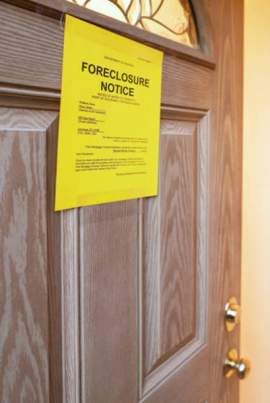
Short Sale Process

Popular In Foreclosure
Deed In Lieu Of Foreclosure Stop Foreclosure Pre Foreclosure Protecting Tenants At Foreclosure Act Of 2009 Deed In Lieu Of Foreclosure Maryland Avoid Foreclosure Foreclosure Help Eviction Process In Missouri Eviction Process In Alabama Foreclosure Process Short Sale Deed In Lieu Of Foreclosure Ohio
Short Sale Negotiations:
Negotiating with a mortgage holder’s loss mitigation department is the foundation for initiating a short sale; this negotiation is the key factor to purchasing a new home at a deep discount. If an opportunity emerges in which a lender can sell a distressed property without registering a big loss or a toxic debt on their balance sheet, they will do it.
For example, if a homeowner cannot keep up with their $300,000 mortgage and is in turn, facing foreclosure, with the consent of the homeowner, you may offer the underling lender $250,000 as full payment for the mortgage. If accepted, you will instantly save $50,000 on a real estate investment. Negotiating a short sale with a bank or mortgage holder is a complex financial maneuver; however, with careful research, it is possible to maximize profits with short sale transactions. The first step in the short sale process is identifying potential investment opportunities. Searching for distressed assets is simplified through the Internet; a number of websites will list properties that are in danger of being foreclosed and are thus susceptible to short sale deals. To be most successful in the short sale process, you should reach out to homeowners who are three or more months behind on their mortgage payments. At this stage, the homeowner has already received a Notice of Default and is close to being foreclosed on. This situation places pressure on the homeowner and the bank to get a deal done; the chances of curing the loan and paying the amount owed is slim, representing a perfect time to strike a short sale deal. In this stage of the short sale process, each party wants to get a deal done—you want to buy the house at a discount, the bank wants to recoup their toxic debts and the homeowner wants to avoid a foreclosure.
What to do if you are the Seller:
If you are the seller of a distressed property and wish to avoid foreclosure, you must make sure you are eligible to engage in the transaction by answering “yes” the following questions:
• Have you suffered an economic hardship that has impeded your ability to fulfill your mortgage obligation? Divorce, unemployment, death in the family or medical costs are applicable hardships
• Do you owe more than the house is worth or can you not afford the mortgage anymore?
• Is it impossible for you to modify your current mortgage?
If you qualify, you will be required to submit some or all of these documents (they will be explained later):
• 2 years of tax returns
• An HUD-1 preliminary net sheet
• 2 years of W-2 forms
• Current check stubs
• Bank statements
• Comparative market analysis of recent comparable sales
Contacting lenders:
Before contacting lenders, the short sale process requires you to gather as much information as possible regarding the homeowners and the said properties. Prior to contacting a bank’s loss mitigation department you must secure the consent of the homeowner; both parties must agree to the short sale before the deal is negotiated with the bank. To engage in a short sale the underlying property owner needs to prove that he or she is a victim of an economic hardship that has prevented him/her from satisfying their loan. A lost job, medical bills, disability etc. must be proven—via the delivery of documentation to the bank—in order to engage in a short sale.
When you have found your desired short sale target you should call the underlying mortgage holder’s “Loss Mitigation Department” and inform the representative that you represent the homeowner of the distressed property. Contact with the lender should be made after you contact the homeowner and negotiate a short sale deal.
When you have contacted the lender, the institution will hire a local real estate broker or appraiser to evaluate the property in the midst of foreclosure. The agents will review the condition of the home in relation to current market condition to provide the lender with an estimate of the property’s value. This estimate, known as the Broker’s Price Opinion, serves as the key piece of information that a lender will use when making a decision to engage in a short sale.
Short Sale process: Delivery of the Hardship Letter
After the delivery of the Broker’s Price Opinion, a lender will demand a hardship letter to justify the missed payments and impending default. This request is fairly extensive; the homeowner may be required to submit tax returns, pay stubs or other financial documents that prove an inability to meet the existing mortgage payments.
In addition to the hardship letter, the lender will require a written agreement between you and the homeowner. This agreement, delivered via the HUD-1 settlement statement reassures the lender that the homeowner wishes to engage in the deal and is not receiving cash for the short sale.
The HUD-1 settlement form will require you to itemize all charges imposed on the homeowner and you for the short sale. In essence, the form is a complete list of all incoming and outgoing funds associated with the transaction.
The lender involved in the short sale process will typically agree to a large discount if the property requires a significant amount of repair—the more work that needs to be done, the harder it is to sell on the open market. As a result, you will need to include a list of all prospective repairs for the home. Hiring a professional to appraise the property and provide you with a bid of repair estimate is suggested.
Short Sale Process: Waiting for a Response
Once the appropriate documentation has been secured and delivered to the lender, the coordinating loss mitigation department will review the application and notify you, via written mail, within three to six weeks of the filing.
NEXT: Short Sale v. Foreclosure





















